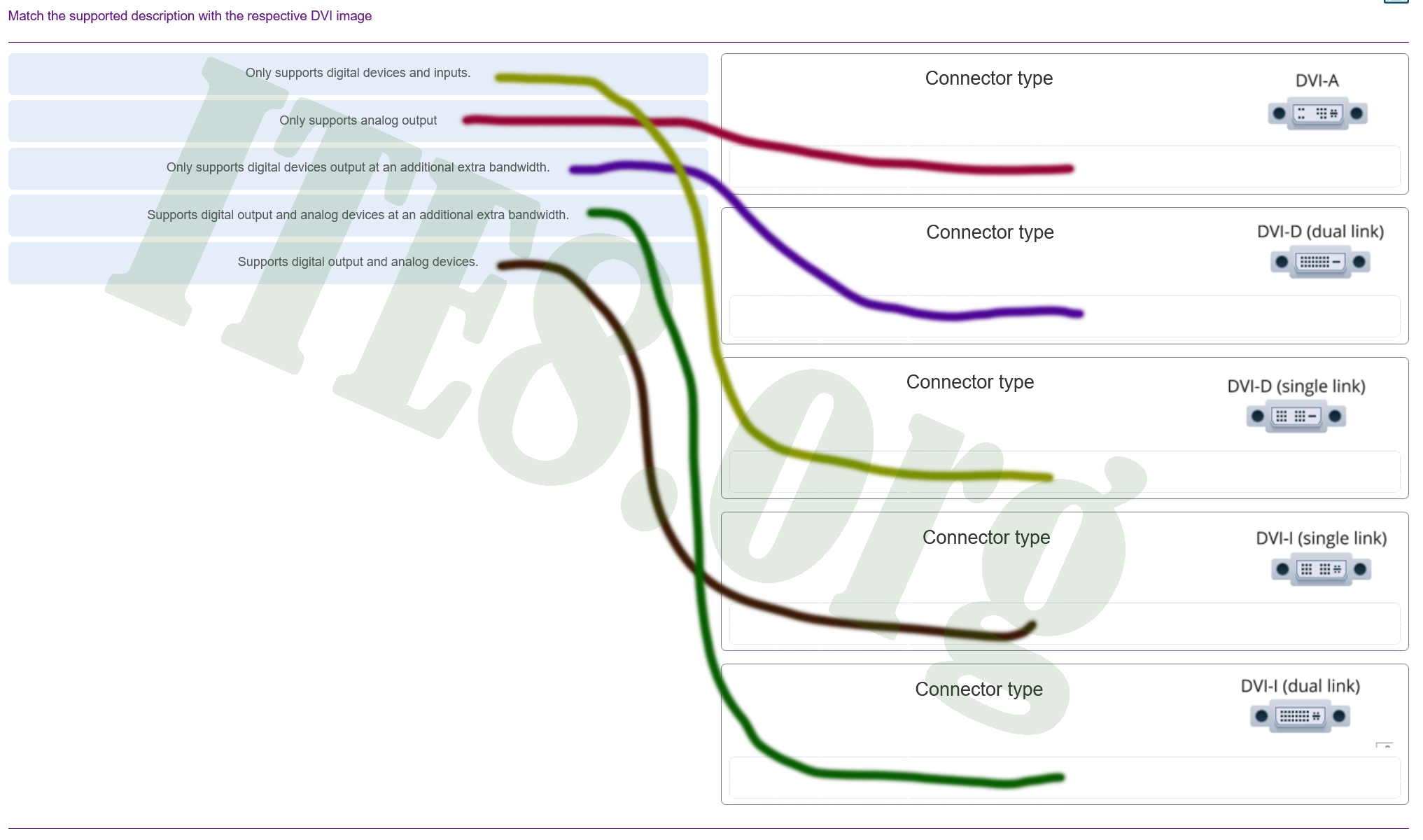Connector type DVI-A:
- DVI-A is a DVI connector type that supports only analog output. It is not designed to handle digital signals or devices. Therefore, it matches the description of “Only supports analog output.”
Connector type DVI-D (dual link):
- DVI-D (dual link) is a DVI connector type that supports only digital devices and inputs. It does not have analog capabilities. Hence, it matches the description of “Only supports digital devices and inputs.” Additionally, DVI-D (dual link) provides higher bandwidth compared to single-link DVI, allowing for higher resolutions and better performance. This matches the description of “Supports digital output and analog devices at an additional extra bandwidth.”
Connector type DVI-D (single link):
- DVI-D (single link) is similar to DVI-D (dual link) in terms of only supporting digital devices and inputs. It does not support analog signals. Therefore, it matches the description of “Only supports digital devices and inputs.”
Connector type DVI-I (single link):
- DVI-I (single link) is a DVI connector type that supports both digital output and analog devices. It is capable of transmitting both digital and analog signals. Hence, it matches the description of “Supports digital output and analog devices.”
Connector type DVI-I (dual link):
- DVI-I (dual link) is similar to DVI-I (single link) as it supports both digital output and analog devices. Additionally, DVI-I (dual link) provides higher bandwidth compared to its single-link counterpart, allowing for higher resolutions and better performance. This matches the description of “Supports digital output and analog devices at an additional extra bandwidth.”
These matches explain how each DVI connector type corresponds to the given descriptions, considering their capabilities and functionalities.
